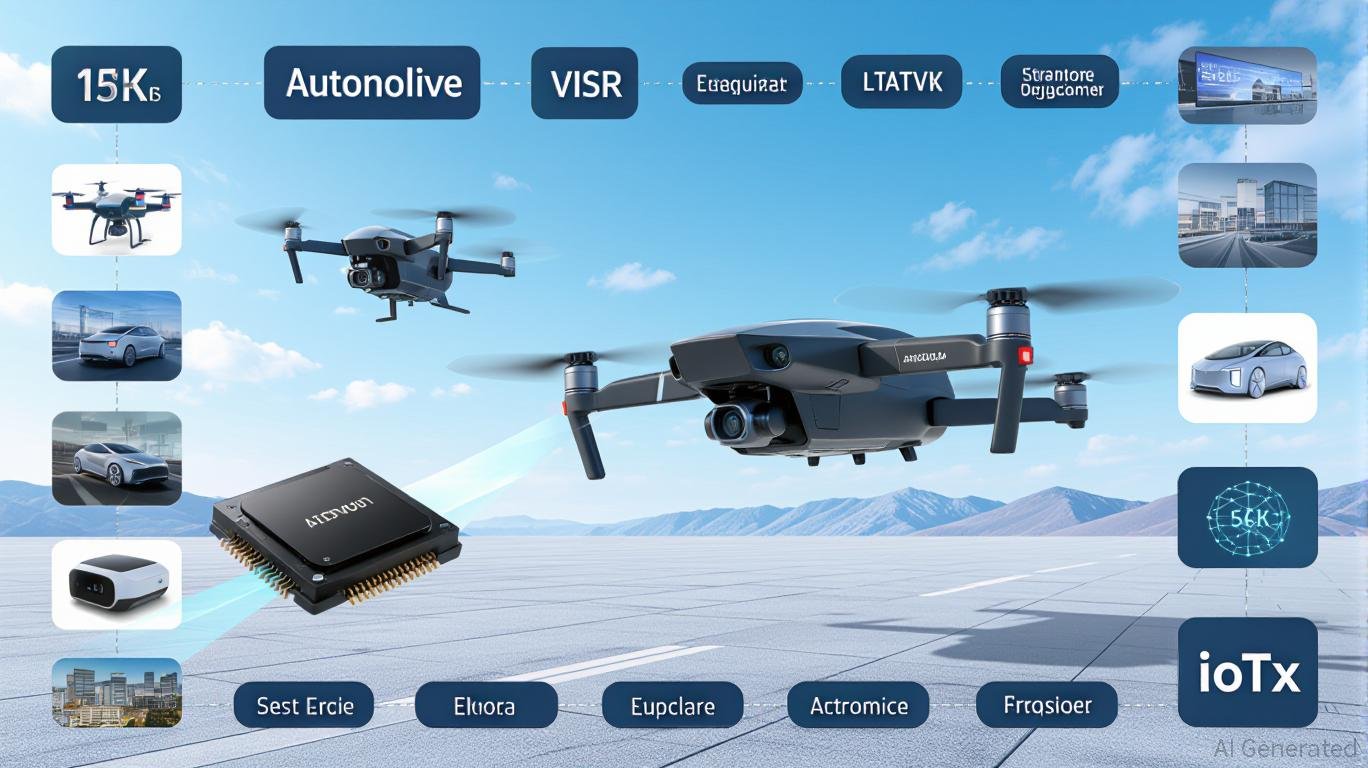Tools & Platforms
AI data centers: Flexible and efficient thanks to fibre optic technology

The increasing use of artificial intelligence poses huge challenges for data centers. AI applications generate enormous amounts of data that need to be processed and forwarded in ever shorter periods of time. At the same time, the requirements for energy efficiency, sustainability and regulations are becoming more stringent. Operators are therefore faced with the task of designing their infrastructure in such a way that they can cope with the increasing computing load while remaining energy and cost efficient. Fiber optic technology plays a key role here. It offers a powerful and scalable solution to meet the increasing demand for bandwidth and speed. Traditional copper connections are increasingly reaching their physical limits in modern high-performance data centers, while fiber optics offer significantly higher transmission rates and lower signal losses. These properties are crucial when it comes to networking the thousands of GPUs required for AI calculations.
A central component of this development is the Propel platform presented by CommScope. It was designed specifically for data centers that are geared towards AI workloads. The platform relies on modular structures, ultra-low attenuation values and a particularly high packing density so that computing power can be concentrated in a smaller space. It supports data rates of 400 gigabits per second up to 1.6 terabits per second, creating the basis for ultra-fast, reliable data transmission.
Fiber optic solutions such as Propel have the advantage that they can be used very flexibly thanks to their modular design. Operators can expand existing systems without having to rebuild their entire infrastructure. This saves time, costs and reduces the space required in the data center. At the same time, plug-and-play modules shorten installation times, which plays a decisive role, especially in times of skills shortages.
Another important element is energy efficiency. AI data centers consume many times more electricity than conventional infrastructures. Studies assume that the energy requirements of AI data centers could increase by more than 150 percent in the coming years. Fiber optic technologies in combination with new approaches such as co-packaged optics help to significantly reduce energy consumption per data transmission. Instead of using additional active components for each connection, the signal transmission is integrated more densely, which means that less energy is required per bit. The use of energy-efficient transceivers also helps to reduce overall requirements.
Added to this is the possibility of automated management. Systems such as imVision record and monitor the entire fiber optic infrastructure in real time. In this way, unused ports can be identified, bottlenecks avoided and power consumption optimized. Operators can thus not only increase efficiency, but also meet regulatory requirements for transparency and sustainability more easily.
Hans-Jürgen Niethammer, responsible for Business Development and Solution Architect Data Center EMEA at CommScope, emphasizes that the fiber optic requirements in AI data centers are up to eight times higher than in conventional data centers. At trade fairs such as the Tech Show Frankfurt 2025, he emphasized that operators will not be able to cope with the upcoming requirements without the massive use of fiber optic technology. With solutions such as Propel or the new XFrame ODF, CommScope wants to pave the way for data centers that can operate both more efficiently and more sustainably.
Conclusion
The development of AI data centers is inextricably linked to the use of modern fibre optic technology. It enables the ultra-fast transmission of huge amounts of data, improves energy efficiency and reduces space requirements. Modular and scalable systems allow operators to flexibly adapt their infrastructure and meet the increasing demands of the future. Fiber is therefore proving to be a key technology for taking data center performance to the next level while supporting sustainability goals.
Source: it-daily.net
Tools & Platforms
iShares Future AI & Tech ETF (NYSEARCA:ARTY) Surges 27.6% in 2025 — Is It a Buy?

ARTY delivers strong tech exposure with 83% allocation to AI leaders, but volatility and valuations test investor conviction | That’s TradingNEWS
8/30/2025 8:54:36 PM
Tools & Platforms
Emperor Musk’s AI Clothes – Will Lockett’s Newsletter

Musk has been parading around in his AI clothes for a while now. With the amount he screams and shouts about AI, you’d think he invented it. Of course, like everything else Musk peddles, he had nothing to do with its invention or development, except for underpaying and overworking his engineers and being an awful, overpromising PR man. However, people aren’t just noticing that Musk’s clothes are non-existent — they are also starting to point and laugh at his skid marks and the “I Love the Nazi Man” tattoo down his back. Why? Because he just can’t seem to get his AI up and working. And there is no little blue pill to remedy this situation.
Take, for example, Tesla’s hilariously crap Robotaxi rollout. The media at large is only just cottoning on to it being a huge PR stunt.
I have gone on ad nauseam about why Tesla’s self-driving cars are completely inadequate, so if you want to know the details, read my previous article here. But the helicopter view is that, unlike other autonomous vehicles, Tesla’s system has zero redundancy or safety nets and requires a nearly 100% accurate AI — which categorically can’t exist — to be even remotely safe.
Tesla is painfully aware of this fatal flaw, with Tesla engineers whistleblowing their concerns about it to the media (read more here) and the DOJ opening an investigation (read more here). So I, along with countless other commentators, was pretty damn relieved to find out that Tesla’s Robotaxis had safety drivers. There was even mention of remote workers being able to take control of the car and drive it safely in the case of a critical disengagement.
But this kind of system isn’t impressive enough for Musk. Any Uber or Lyft driver with a Tesla who wastes their money on FSD can do the exact same thing. There is no social or investor kudos to be gained for Tesla or Musk here. And here is a hint: Musk doesn’t make money from Tesla sales. After all, his $50 billion pay packet (which is now less, thanks to Musk tanking Tesla’s valuation) was the equivalent of him getting $10,000 for every Tesla ever sold! Tesla makes substantially less profit from every car sold than that.
So, what do you do if you have bet your entire company’s valuation on autonomous technology that you simply can’t deliver on?
Fudge it.
Tesla put the safety driver in the passenger seat! Because, look, it’s a self-driving car — there is no one in the driver’s seat!
This is a dangerous move that offers no benefit other than optics.
Rather than being able to properly take over the car and drive it to safety, the only thing these safety drivers could do was press a button to bring the vehicle to a stop. Which, as anyone with a driving licence will tell you, is not always the safest option! Particularly when you consider that Robotaxis have been spotted driving into lanes of oncoming traffic.
Yet, this bafflingly shite decision wasn’t really reported on. Or at least it wasn’t until a video surfaced a few days ago that showed FSD failing and a safety driver being forced to exit the vehicle in the middle of traffic to take the driver’s seat and regain control. (watch it here).
This shows just how wildly dangerous Tesla’s Robotaxis are.
The safety driver had to take a serious risk to take control of the car. Not only that, but this incident suggests there are no remote operatives capable of taking over when things go wrong. That has been a core safety feature of all developing self-driving ride-hailing services, such as Waymo and Cruise, since day one and is routinely used to keep passengers safe. The fact that this is absent for Robotaxis, which Tesla already know have a far, far higher critical disengagement rate than any other self-driving ride-hailing service, could easily be seen as insanely negligent.
Musk is comfortable putting other people — not just the safety driver, but paying passengers and the public — in danger, all for a crappy PR stunt to cover up how bad his self-driving system actually is. And the media at large, as well as public consensus, are beginning to catch up to this horrifying fact.
However, Musk’s AI woes go far, far deeper than that.
Tools & Platforms
Ambarella’s Accelerating Edge AI Growth and Its Implications for Semiconductor Investors

Ambarella, Inc. (NASDAQ: AMBA) has emerged as a standout performer in the edge AI semiconductor sector, driven by a combination of technological innovation, strategic market positioning, and robust financial growth. In Q2 2026, the company reported revenue of $95.5 million, a 49.9% year-over-year increase, with non-GAAP net profit turning positive at $6.4 million compared to a $5.5 million loss in the prior year [1]. This surge reflects Ambarella’s dominance in edge AI applications such as portable video devices, robotic aerial drones, and automotive systems, where its CVflow architecture delivers unmatched power efficiency and real-time analytics [2].
Strategic Momentum: Niche Specialization and Scalable Applications
Ambarella’s competitive edge lies in its focus on low-power, high-performance system-on-chip (SoC) solutions tailored for edge computing. Unlike NVIDIA’s Jetson Orin (275 TOPS) or Qualcomm’s Snapdragon 8 Elite, which prioritize raw computational power for robotics and mobile AI, Ambarella’s CV5 and N1655 SoCs excel in video-centric edge devices. For instance, its 5nm AI SoCs enable 8K video processing in security cameras and anti-gravity drones like Insta360’s A1, while its Oculii 4D imaging radar is deployed in Lotus’s L2+ autonomous vehicles [3]. This specialization has allowed Ambarella to capture a majority share in the mid- and high-end security camera market outside China and expand into automotive and industrial IoT segments [4].
The company’s Hybrid AI (HAI) architecture further amplifies its scalability. By combining on-device AI inference with cloud connectivity, Ambarella’s SoCs support GenAI models ranging from 0.5 to 34 billion parameters, enabling applications from smart home devices to autonomous systems [5]. HAI revenue is projected to account for 80% of total sales in FY2026, underscoring its role as a growth engine [6].
Market Positioning: Capitalizing on Edge AI’s Explosive Growth
The edge AI semiconductor market is expanding rapidly, with a projected CAGR of 17.6% through 2030, reaching $58.9 billion by 2030 [7]. Ambarella’s strategic partnerships and design wins position it to benefit from this growth. For example, its collaboration with Gauzy on ADAS solutions has led to deployments in Ford Trucks, while its driver monitoring system with LG was showcased at CES 2025 [8]. These partnerships highlight Ambarella’s ability to integrate edge AI into safety-critical applications, a trend accelerating with the rise of autonomous vehicles and smart infrastructure.
Risks and Challenges: Profitability and Competitive Pressures
Despite its momentum, Ambarella faces challenges. Its EBIT margin remains negative at -33%, and the company relies on a single logistics provider, exposing it to supply chain risks [9]. Additionally, while it leads in niche markets, broader competitors like NVIDIA and Qualcomm are expanding into edge AI, leveraging their ecosystem advantages. For instance, NVIDIA’s Blackwell architecture targets enterprise AI workloads, while Qualcomm’s Cloud AI 100 Pro competes in mobile and automotive AI [10]. Ambarella must also contend with rising competition from Chinese firms developing localized alternatives, which could erode its market share in the long term.
Conclusion: A High-Growth Play with Caution
Ambarella’s accelerating edge AI growth and strategic focus on high-ASP applications make it an attractive investment for semiconductor investors. Its ability to innovate in video-centric edge devices, coupled with a strong balance sheet ($259 million in cash) and disciplined cost management, positions it to capitalize on the $58.9 billion edge AI market [11]. However, investors should monitor its path to profitability and the risks posed by supply chain constraints and competitive pressures. Notably, historical data from earnings release events since 2022 suggests a tendency for underperformance in the post-announcement period, with average cumulative returns declining by approximately -3% over 30 days [12].
Source:
[1] Ambarella, Inc. Announces Second Quarter Fiscal Year 2026 Financial Results [https://ambarella.gcs-web.com/news-releases/news-release-details/ambarella-inc-announces-second-quarter-fiscal-year-2026]
[2] Ambarella, Inc. (AMBA) – in seconds. [https://www.tenzingmemo.com/companies/amba_ambarella-inc]
[3] Ambarella’s Strategic Position in the HAI and Edge AI Markets: A High-Growth Play for 2026 and Beyond [https://www.ainvest.com/news/ambarella-strategic-position-hai-edge-ai-markets-high-growth-play-2026-2508/]
[4] Top 20 AI Chip Makers: NVIDIA & Its Competitors [https://research.aimultiple.com/ai-chip-makers/]
[5] Ambarella (AMBA) Q2 2026 Earnings Call Transcript [https://www.fool.com/earnings/call-transcripts/2025/08/28/ambarella-amba-q2-2026-earnings-call-transcript/]
[6] Ambarella’s Edge AI Growth Strategy: Balancing IoT Momentum and Automotive Potential for Long-Term Margin Expansion [https://www.ainvest.com/news/ambarella-edge-ai-growth-strategy-balancing-iot-momentum-automotive-potential-long-term-margin-expansion-2508/]
[7] Edge AI Hardware Market Size, Share & Trends [https://www.marketsandmarkets.com/Market-Reports/edge-ai-hardware-market-158498281.html]
[8] Gauzy, Ambarella Partner to Advance ADAS with Edge AI [https://www.engineering.com/gauzy-ambarella-partner-to-advance-adas-with-edge-ai/]
[9] Ambarella Stock Soars Amid Market Volatility and Positive Technological Advancements [https://stockstotrade.com/news/ambarellainc-amba-news-2025_08_30/]
[10] What are the top edge AI chips of 2025? [https://www.engineersgarage.com/what-are-the-top-edge-ai-chips-of-2025/]
[11] AI Chip Statistics 2025: Funding, Startups & Industry Giants [https://sqmagazine.co.uk/ai-chip-statistics/]
[12] Backtest results for AMBA earnings release impact (2022–2025).
“””
-
Tools & Platforms3 weeks ago
Building Trust in Military AI Starts with Opening the Black Box – War on the Rocks
-

 Ethics & Policy1 month ago
Ethics & Policy1 month agoSDAIA Supports Saudi Arabia’s Leadership in Shaping Global AI Ethics, Policy, and Research – وكالة الأنباء السعودية
-

 Events & Conferences3 months ago
Events & Conferences3 months agoJourney to 1000 models: Scaling Instagram’s recommendation system
-

 Jobs & Careers2 months ago
Jobs & Careers2 months agoMumbai-based Perplexity Alternative Has 60k+ Users Without Funding
-

 Funding & Business2 months ago
Funding & Business2 months agoKayak and Expedia race to build AI travel agents that turn social posts into itineraries
-

 Education2 months ago
Education2 months agoVEX Robotics launches AI-powered classroom robotics system
-

 Business1 day ago
Business1 day agoThe Guardian view on Trump and the Fed: independence is no substitute for accountability | Editorial
-

 Podcasts & Talks2 months ago
Podcasts & Talks2 months agoHappy 4th of July! 🎆 Made with Veo 3 in Gemini
-

 Podcasts & Talks2 months ago
Podcasts & Talks2 months agoOpenAI 🤝 @teamganassi
-

 Jobs & Careers2 months ago
Jobs & Careers2 months agoAstrophel Aerospace Raises ₹6.84 Crore to Build Reusable Launch Vehicle

